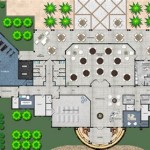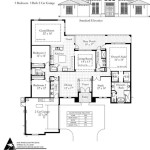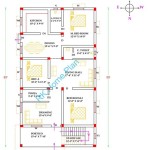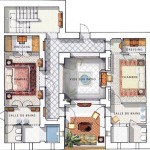What Scale Are Architectural Plans Drawn At?
When creating architectural plans, selecting the appropriate scale is crucial for conveying design intent accurately and ensuring smooth construction. Scale refers to the ratio between the size of the drawing and the size of the actual building or structure. Choosing the correct scale allows architects to fit all necessary details onto the plans while maintaining clarity and readability.
Factors to Consider When Choosing Scale
- Size of the Project: Larger projects require smaller scales to fit all elements onto the plans. For example, a scale of 1:100 (1 unit on the plan represents 100 units in real life) might be appropriate for a large commercial building.
- Level of Detail Required: The amount of detail required influences the scale. Construction drawings, which include highly detailed information, typically use larger scales (e.g., 1:50). Schematic design plans, which provide a general overview, may use smaller scales (e.g., 1:200).
- Paper Size: The size of the paper used for the plans can limit the scale options. It's important to select a scale that allows all necessary information to fit comfortably within the borders.
Common Architectural Scales
There are several common scales used in architectural plans:
- 1:50: Used for construction drawings, showing detailed information for small areas, such as bathrooms or kitchens.
- 1:100: Suitable for floor plans and elevations of smaller buildings or projects, providing a balance between detail and overall view.
- 1:200: Used for site plans, floor plans of larger buildings, and elevations, allowing for a broader view and reduced detail.
- 1:500: Utilized for site plans covering multiple buildings or large areas, providing a more comprehensive overview with less detail.
- 1:1000: Used for regional planning, infrastructure design, and master plans, focusing on broader perspectives and minimizing detail.
Tips for Choosing the Right Scale
- Consider the purpose of the plans and the level of detail required.
- Choose a scale that allows for all necessary information to fit comfortably on the plans.
- Ensure the scale is consistent throughout the entire set of plans.
- Use a scale that is familiar to the intended recipients of the plans.
- Consider using multiple scales for different parts of the project, depending on the level of detail required.
Conclusion
Choosing the correct scale for architectural plans is essential for effective communication and accurate construction. By carefully considering the factors discussed above, architects can ensure that their plans are清晰易懂,并且包含所有必要的详细信息。

Understanding And Using Architectural Scales Archdaily

Understanding And Using Architectural Scales Archdaily

Architectural Drawing Scale

Understanding And Using Architectural Scales Archdaily

How To Use An Architectural Scale Ruler Metric Archimash Com

Scale In Drawing

How To Use An Architectural Scale Ruler Metric Archimash Com

How To Read Drawing Scales Mep Academy

Scale Drawing Designing Buildings
How To Draw ¼ 1 Scale For A Floor Plan Quora








